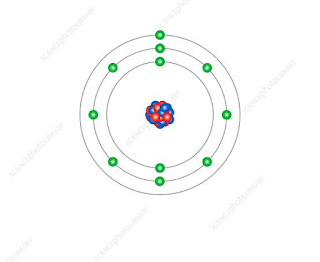BOND ENERGY (BOND ENTHALPY):
•Definition:
"The energy required to break all the bonds present in one mole of a substance is called bond energy or bond enthalpy".
"It is the energy required to break up an Avogadro number of bonds i.e one mole of bond".
• Unit:
It has unit kJmol-1.
• Information:
The strength of a bond is measured by its bond energy. The larger the bond energy, the stronger is the bond.
• Measurement:
It is determined experimentally by measuring the heat involved in a chemical reaction. It is also called bond enthalpy, as it is measure of enthalpy change at 298K.
•FACTORS:
• Electronegativity difference:
Greater the electronegativity difference, greater will be the bond energy because of more attraction. So a polar covalent bond is stronger than a non polar covalent bond.
• Atomic character:
Greater the electronegativity difference, greater will be the ionic character and greater will be the bond energy because of more attraction. For example, H-F bond energy is 567 kJmol-1 but H-Cl bond energy is 431 kJmol-1.
• Size of atoms:
Greater size of atoms, smaller Will be the bond energy because of the weak intermolecular forces. For example, the bond energy of H-H bond is 435 kJmol-1 and that Cl-Cl is 243 kJmol-1. It is due to the shorter bond length in H2 molecule and greater bond length in Cl2 molecule.
• Bond length:
Greater the size of atoms, greater will be bond length and smaller Will be the bond energy because of weak intermolecular forces. For example, bond energy of Cl-Cl is 242 kJmol-1 and that of I-I is 151 kJmol-1.
• Bond order:
It is found that energies of multiple bonds are greater than those of single bonds. But a double bond is not twice as strong as a single bond or a triple bond is not thrice as strong as a single bond. It means that a sigma bond is greater than a pi bond.



